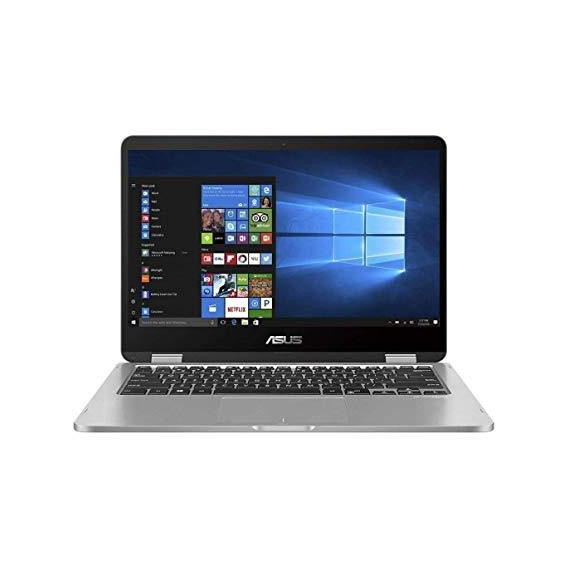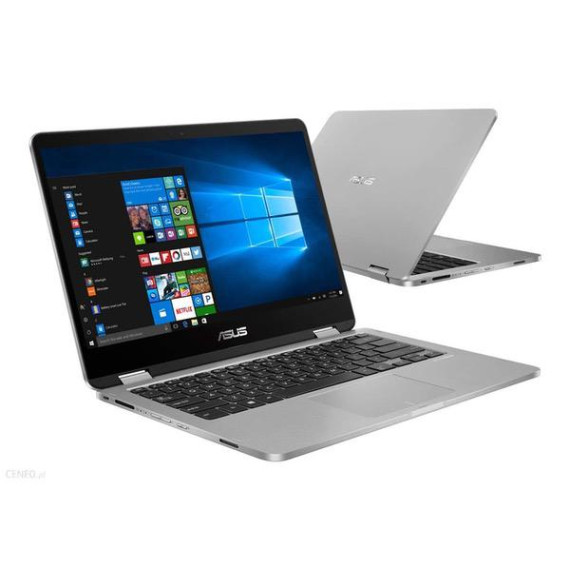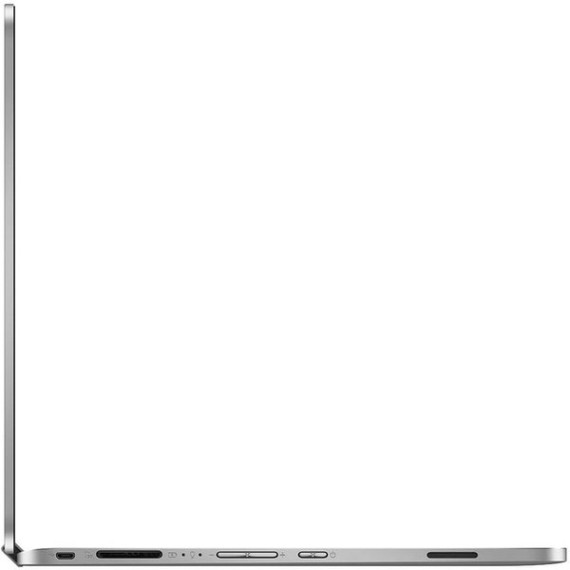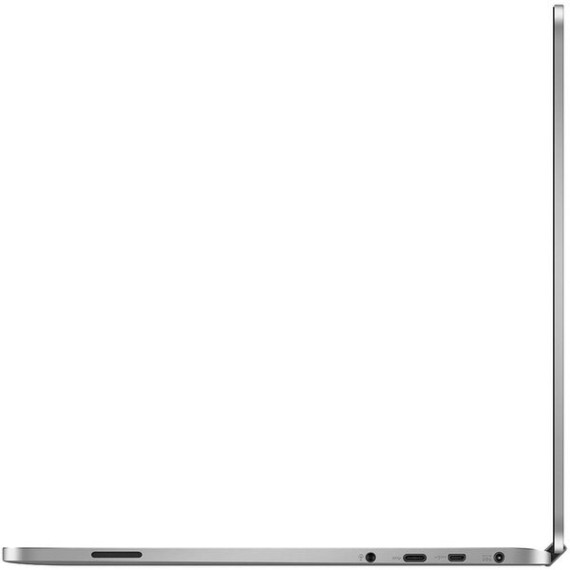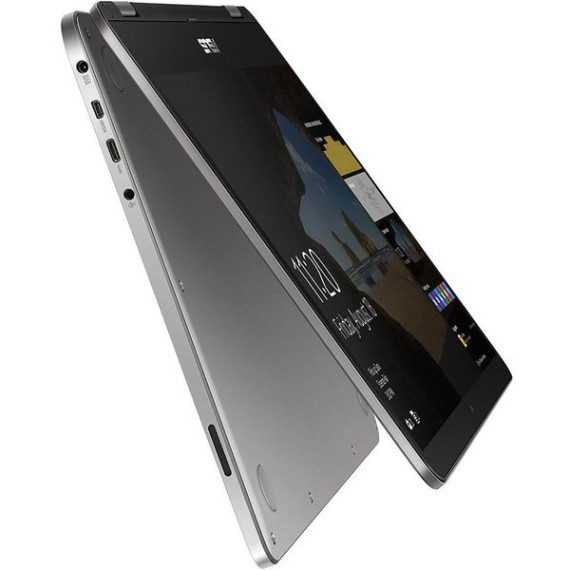K. Crawford
Ive had this laptop for a few weeks and Im really happy with it. Theres a lot to like, although admittedly a few quirks. For my review, Ill start with the things I was curious about when I bought it (and Ive since found out) that I suspect others are wondering about as they are a bit unclear in the specs and description: 1. Although it comes with Windows 10 S, it only takes about 10 clicks of the mouse and ~2 minutes to convert it to Windows 10 Pro... for free! 2. The complaints about the SD cards falling out as commented by others now make sense. The issue is a full depth SD card sticks out of the side by about 16mm (~5/8"). I must admit, when I realized that I was pretty frustrated. My plan was to use the SD card to significantly bolster the storage of it (64 GB being so small), but I didnt expect that to mean I had a card sticking out the side. Luckily, theres a solution, a half depth micro-SD to SD adapter: https://www.amazon.com/gp/product/B01MDPCRV7/ . Ive installed my 128 GB micro-SD card into that and it sticks out less than 1mm and works great. 3. The microHDMI is just like regular HDMI. So all it means is you need a micro-HDMI to HDMI cable instead of a regular HDMI cable. I bought this one and it works, including sound: https://www.amazon.com/gp/product/B00Z07JYLE/ 4. The micro-USB port works just as expected. Just get a adapter (or adapter cable) and any standard USB 2 device works. I am using these successfully: https://www.amazon.com/gp/product/B01C6032G0/ Since Im already on an accessory items list binge here are a few more to consider: 1. A bluetooth mouse. A standard wireless mouse that comes with a USB receiver is no good. On a full size laptop, those receivers only stick out a little bit and so not a big deal other than stealing a USB port. But with the micro-usb dongle required for this laptop to attach any USB device, a USB receiver is awkward and invites damage. Go bluetooth instead for your wireless mouse and you avoid any of those problems. I picked this one and am happy with it: https://www.amazon.com/gp/product/B07927717B/ (as a funny side note, be careful with the mouse power switch while it is in your briefcase. I had it in tablet mode and it was freaking out! The reason... the bluetooth mouse was getting moved and clicked inside the briefcase while I was working on it. Once I fished it out of the bag and turned off the mouse, everything worked as expected.) 2. A USB-C hub with an ethernet port. The laptop doesnt have wired ethernet and particularly at the beginning when youre loading it up with lots of stuff, youll miss your gigabit networking (or at least I did). I havent bought one yet, but I was missing that functionality during app installation. 3. 2nd charger. Always nice to have, right? I bought and am happy with this one: https://www.amazon.com/gp/product/B01IXZE7I4/ What you dont need to buy: -You dont need a simple USB-C to USB-A adapter. The laptop comes with one. Finally, overall impressions: Pros: -Its an exceptional value at just over $350. Nothing else comes close. I think it would still be a pretty good deal at $500. Its hard to believe Apple wants $1300 for a notebook with basically the same specs (OK, a bit more disc/memory, but a smaller 12.5" screen). MacOS isnt worth that much. Or ChromeOS for that matter. Why is Asus charging $450 for the same basic HW and a smaller 12.5" screen? Why would I buy that when I can get a fully functional OS with the same basic HW for $100 less? -Fan-less! I didnt realize at first how much I loved that. Its always silent and Ive never noticed it get beyond ever so slightly warm. This m-3 processor is so efficient, it can both have good performance and be fan-less. -Surprisingly powerful. Dont get me wrong, this wont be your video editing laptop, but I was watching a movie on one screen while installing apps on the other and it did surprisingly well. Now that Ive used it for a few weeks, there hasnt been a moment where Ive been frustrated with the performance. All web-applications seem to be snappy enough and MS Office works great. -Great battery life. Another benefit of the highly efficient m-3 processor is the battery life. Im not an all-day user away from a power outlet, so I dont stress it as much as some will, but after a few hours of writing, it will still have 75% battery life. It has gotten to where I never worry about the battery. I use it for 2-3 hours at a time, even a couple times a day, and theres still plenty left when I get back to my desk at the end of the day. -Fingerprint scanner! I didnt know it had it, and its a nice feature and works well. It makes logging in much quicker -360 degree hinge works great and looks very sturdy to me. All 3 "modes" (traditional laptop, tablet and standing triangle) are useful at different times. -Touchscreen. Its responsive and accurate. -Speakers are surprisingly good. -It is very thin. This thing takes up hardly any room in your briefcase or backpack. -It looks awesome. Definitely doesnt look like a cheap laptop. It looks like a Windows PC rival to a Macbook Cons: -It would be nice for there to be a 128 GB or 256 GB SDD version actually for sale. The ASUS website says it is an option for this model, but good luck finding it for sale anywhere. My solution was as listed above: Add a big SD card for my data using a shallow adapter so it doesnt protrude. Just remember your apps generally cant go there. -The screen doesnt fill the top half of the laptop. The sides and top are fine, but theres a 1-inch section at the bottom that is just a thick border. They should either make the laptop smaller to fit the screen size or if thats not possible, make the screen bigger even if they lose 16x9. Screens should define the size of the mobile device. All mobile devices are a compromise between the desire for screen real estate and the portability of its size. Thus, the device size should always be optimized so that the screen just barely fits. Any excessive borders are inefficient in this regard. -Speaking of size, it really is a bit big for a tablet. If you envision yourself primarily using this in tablet mode, go down to a 12.5" or 11.6" screen. This is just a bit tall in portrait tablet mode. But, if you primarily want a laptop,14" is a good screen size. Personally, I think a 13" screen would be ideal. It would be a bit big for a tablet, but less so that 14" and 13" makes it so the height of it when collapsed is about the same as a binder or notepad. It also means it would fit in most padfolio cases, whereas this would not. Sadly, Asus doesnt make a 13" Vivobook, only 14" and 11.6" (which is too small). -The touchpad. Ive always hated them anyway. I wouldnt say this is a horrible one, but its not the best either. It has a bit of a loose feel and its hard to get it to consistently click. I know Im an odd-duck in this department, but Ive always preferred the nub-mouse in the center of the keyboard. But theyre very rare these days. Why!?! -Windows 10 "tablet mode" is pretty weak. Definitely not intuitive. After using Android and iOS on tablets, its amazing how lacking Windows 10 tablet mode is. The good news is you arent required to switch to that mode when in tablet configuration. But at the same time desktop Windows 10 isnt really tablet friendly either (but at least youll know how to make it work!) In fairness, with time and experience, Windows 10 tablet mode is usable (just not intuitive). -Speaking of which, as shipped it prompts whenever you switch the "flip configuration" (traditional laptop, tablet, lid closed or triangle stand) to ask if you want to switch to or from desktop or tablet mode. It also allows you to not prompt and auto-switch. But unfortunately, theres one mode that it wants to do that doesnt make any sense: if you hook it up to an external monitor and close the lid, it wants to go to tablet mode. But if you think about it, it should want to stay in desktop mode, since that external screen is unlikely to have a touch screen. Thus, since I cant find a way to force each "flip configuration" to the tablet/desktop mode of my choice, I have to leave it in prompting mode for every time I switch. -Im learning one needs to be careful with the "bluetooth everything" strategy. Bluetooth items can conflict with each other. I hooked up some bluetooth headphones and they would stutter when I moved my bluetooth mouse. Reading various debugging articles, apparently this is a common problem. Good devices do better than weak ones in avoiding these problems (indeed another set of bluetooth headphones are working without any stutter), but it just is one more thing that the lack of ports on this device makes a little tougher. -Hard to call this a "con" because the only way to make it lighter is to take out some battery, which I wouldnt want, but I must admit that it felt a little heavier than I expected, particularly when using as a tablet. I expected something this thin to be lighter. Not that it is heavy, but dont be surprised that it has some heft to it. -Another "con" that is one of those things that I can see why the compromise was made is the lack of full height USB-A ports. They would of course had to make it a tad thicker to get those in. But now that Ive used it for a while, Id have rather it be a millimeter or two thicker to get full-size USB-A ports. (The micro-HDMI I can more make my peace with) Perhaps in a couple years when USB-C has more thoroughly penetrated the market, Id be happy with similar device with 2 or 3 USB-C ports and no micro-USB, but for now, theres just too much that uses USB-A ports and the adapter becomes awkward. All in all, a very good unit and I am very happy with it. Id recommend it to just about anyone, even as a supplement to a more powerful laptop. Id also say that as long as pricing is like this, I cant imagine why Id ever buy a chromebook and doubt Id ever by a tablet. At this price-point and performance, why would I spend more to get a less powerful and less flexible device and OS?




